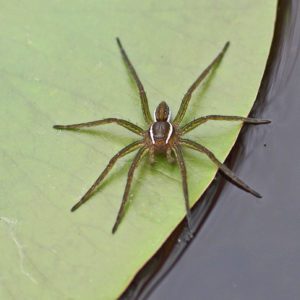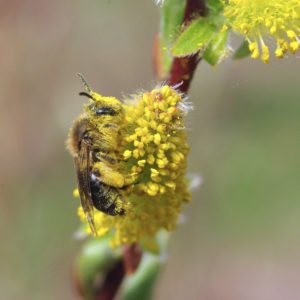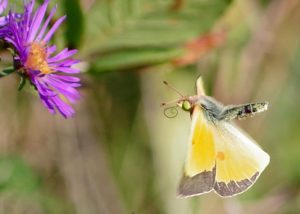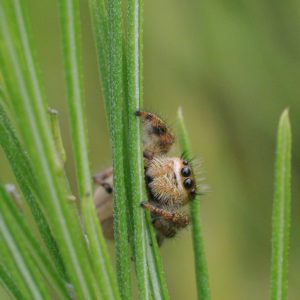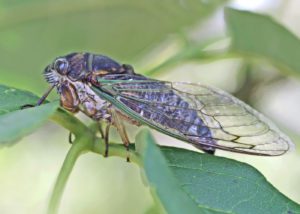Howdy, BugFans,
While we’ve been quietly going about our business during this way-too-long pandemic (you know things are bad when you fantasize about going to a board meeting in person), the bugs have been perking along, too. Here’s what they’ve been up to.
LIFE IN THE WATER IN THE WINTER http://www.agatemag.com/2021/03/where-wonders-never-freeze/. For those BugFans who aren’t from God’s Country, the (incredibly beautiful) Driftless Area is a region of deep valleys and high ridges on either side of the Mississippi River around the juncture of Minnesota, Wisconsin, and Iowa. During the peak of the Wisconsin Glaciation, the Laurentide Ice Sheet extended well into Illinois, but it missed the Driftless Area.
MURDER HORNETS 2021 – the obligatory murder hornet story. https://www.kuow.org/stories/key-weapons-in-the-fight-against-asian-murder-hornets-orange-juice-and-rice-wine
On the face of it, a really NICE PICTURE STORY ABOUT THE HUNTING BEHAVIOR OF A FISHING SPIDER https://whyevolutionistrue.com/2021/02/09/readers-wildlife-photos-1220/. But then there’s the video….
[Nota Bene: One of the BugLady’s pet peeves is the subliminal indoctrination that is communicated by the narrator’s tone or by the background music in videos showing predators. This one has it all, except for prey in the form of a cute, bright-eyed bunny or mouse (harder to sympathize with a minnow)]
Remember – HONEYBEES ARE FOREIGN BEES that were imported in the 1600s to pollinate foreign crops. Turns out that there were already plenty of native pollinators, and both the native and the honeybees are really important. Turns out, both are also in trouble. https://www.smithsonianmag.com/smart-news/thousands-wild-bee-species-havent-been-seen-1990-180976901/?utm_source=smithsoniandaily&utm_medium=email&utm_campaign=20210202-daily-responsive&spMailingID=44375570&spUserID=ODg4Mzc3MzY0MTUyS0&spJobID=1940179039&spReportId=MTk0MDE3OTAzOQS2
HOW CAN YOU “SEE” WHEN YOU CAN’T SEE? Ask these caterpillars: https://www.smithsonianmag.com/smart-news/these-caterpillars-can-detect-color-using-their-skin-180972996/?utm_source=smithsoniandaily&utm_medium=email&utm_campaign=20190827-daily-responsive&spMailingID=40517582&spUserID=ODg4Mzc3MzY0MTUyS0&spJobID=1582561816&spReportId=MTU4MjU2MTgxNgS2
HOW BUTTERFLIES FLY (a little more Physics) https://www.smithsonianmag.com/smart-news/study-reveals-secrets-butterfly-flight-180976808/?utm_source=smithsoniandaily&utm_medium=email&utm_campaign=20210122-daily-responsive&spMailingID=44313349&spUserID=ODg4Mzc3MzY0MTUyS0&spJobID=1921850282&spReportId=MTkyMTg1MDI4MgS2
PEACOCK SPIDERS are a genus (Maratus) of jumping spiders, almost all of which live in Australia. “Peacock” because they are ridiculously colorful, and the male’s courtship dance involves flashing his abdominal flaps at skeptical females. Here are some new species of peacock spider – https://www.smithsonianmag.com/smart-news/meet-seven-newly-discovered-species-peacock-spiders-180974549/, and if you can’t get enough of peacock spiders, see https://www.mentalfloss.com/article/62195/5-flashy-facts-about-peacock-spiders.
PERIODICAL CICADA BROOD X, last seen in 2004, is scheduled to emerge over parts of 15 states in 2021 (they barely make it over the Illinois border into Wisconsin – most of our cicadas are Dog day types https://bugguide.net/node/view/1884528/bgimage, which look pretty different than Periodical cicadas). Remember – the immature cicada (nymph) lives below-ground, biding its time, feeding on root juices, until the appointed hour, it’s internal calendar ticking off 3 or 7 or more years, depending on species. Cicada cooking contests abound during big years https://evolutionarythought.wordpress.com/2012/02/26/how-far-weve-come-a-case-study-in-arthropods/
https://www.washingtonian.com/2021/03/08/apparently-brood-x-cicadas-are-edible-and-taste-like-shrimp/?fbclid=IwAR0mOS4BehVwG9tfiXTGUdpdlJYIE878Z7GHKBgDDZnLxEc1zKoDr_TzcjE (but, points subtracted for saying that they’re related to shrimp, which they are, but not closely). Where can you view Brood X? Scroll down: https://www.cicadamania.com/cicadas/periodical-cicada-brood-x-10-will-emerge-in-15-states-in-2021/.
Finally – TREEHOPPERS ARE JUST SO COOL!! https://www.smithsonianmag.com/science-nature/treehoppers-bizarre-wondrous-helmets-use-wing-genes-grow-180973713/
Kate Redmond, The BugLady
Bug of the Week archives:
http://uwm.edu/field-station/category/bug-of-the-week/

